Ringtail Posse 2023: the Generation Witnessing an Extinction Of Urban Wildlife
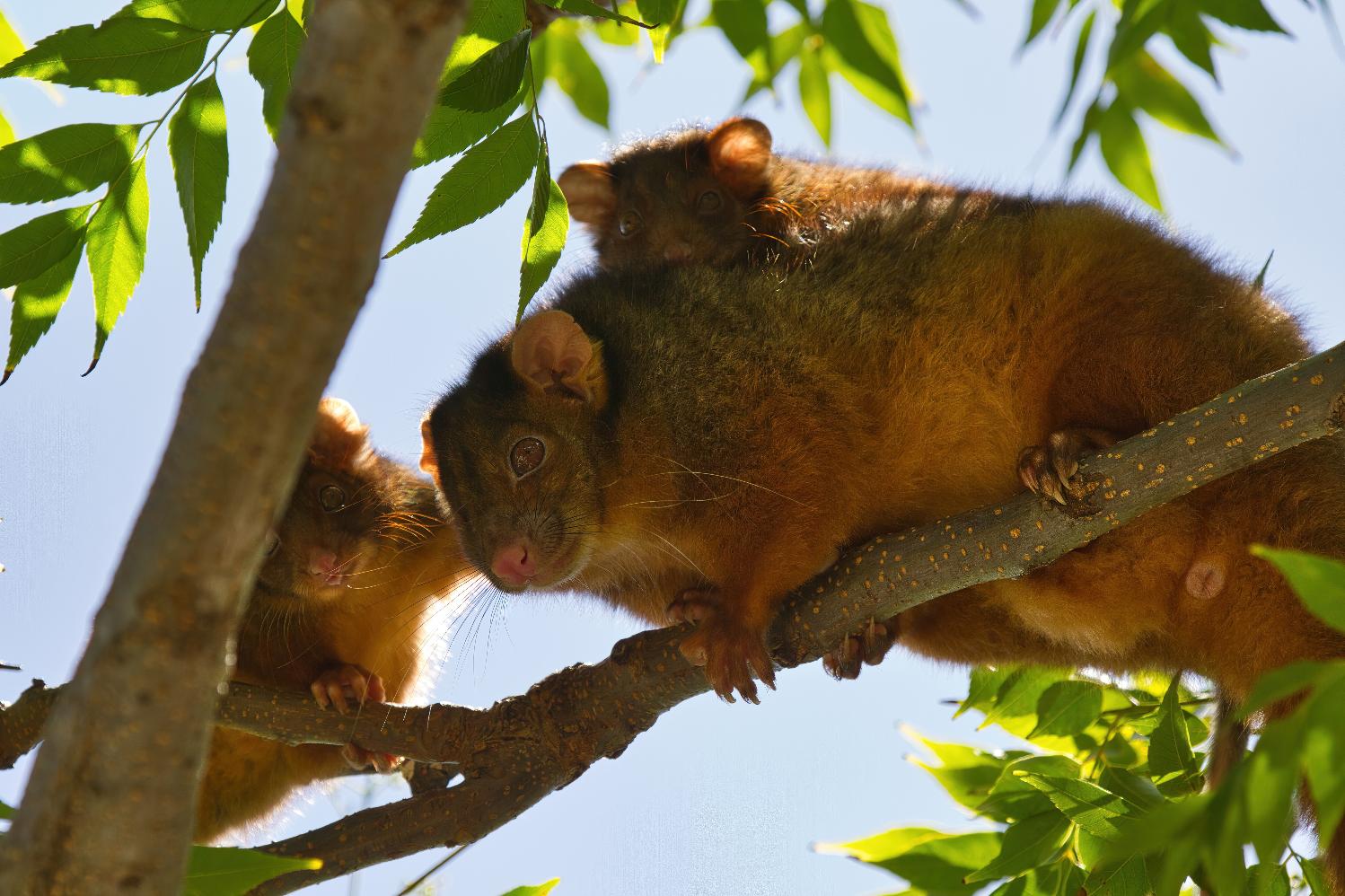
Australian Shorebird Monitoring Program: Critically Endangered Eastern Curlew Chased Out Of Port Hacking On December 10, 2022 + January 12 2023 - Occurs In Our LGA As Well
The Eastern Curlew is listed as critically endangered in Australia, with global populations estimated to have declined by 80% in the last 30 years. As a wading bird that travels across our earth, they rely on intertidal mudflats for food and habitat.
Australia is a signatory of the East Asian – Australasian Flyway. The East Asia/Australasia Flyway extends from Arctic Russia and North America to the southern limits of Australia and New Zealand. It aims to protect migratory waterbirds, their habitats and the livelihoods of people dependent upon them.
On Saturday December 10, jetskis and people disturbed this group of Eastern curlews at Port Hacking. One of the monitors that works as a volunteer to protect this bird when it visits our shores filmed the following. This bird comes to Careel Bay too - where people are frequently seen taking dogs in a 'no dogs' area for this very reason.
The volunteer tells us ;
''Yesterday the Port Hacking eastern curlews put up with 6 hours of disturbance in order to get an afternoon feed. This morning after 1 hr and 4 disturbances they decided the energy needed to stay was too great, so flew out to Botany Bay. I had asked these 2 charmers if they wouldn’t mind turning around rather than walk to end of beach to avoid disturbing the roosting curlews. They had already walked almost 2 km having left their kayaks at the other end of the Spit, surely they wouldn't mind giving up the last 100m. Rude response and on they walked.''
Pittwater Online News forwarded this to the Office of James Griffin, NSW Environment Minister for a response - Monday, December 12, 2022.
Late on Friday December 16th a Department of Planning and Environment spokesperson replied with the statement so readily found on the OEH webpages, nothing specific about addressing what is occurring to these critically endangered birds at Port Hacking was broached.
The statement reads:
''Remember to keep your distance. If shorebirds take off or run away as you approach, you are too close.
Eastern Curlews fly thousands of kilometres to get here, typically from Russia and north-eastern China
Every unnecessary flight uses energy and potentially affects their ability to fly home.
There is a saying: Birds in sight – don’t make them take flight!
Migratory shorebirds have travelled a long way so it’s really important they are allowed to roost and feed in peace, to build up their fat reserves before they migrate north.
There are four ways you can help protect our shorebirds -
1. Pay attention to signs or fences
2. Leash your dog whenever you’re on the beach, and only walk dogs on designated beaches
3. Stick to the wet sand and leave the birds space
4. Respect beach-closure signs and beach-driving rules. Only drive on designated beaches
BACKGROUND INFORMATION
Within Australia, the Eastern Curlew has a primarily coastal distribution, and in NSW is mainly found in estuaries such as the Hunter River, Port Stephens, Clarence River, Richmond River and the south coast.
The Eastern Curlew breeds in Russia and north-eastern China but its distribution is poorly known. During the non-breeding season a few birds occur in southern Korea and China, but most spend the non-breeding season in north, east and south-east Australia.''
It could have been a very expensive day out for these people had Sutherland Shire Council rangers been there. Once again these critically endangered birds were chased from their feeding and resting area, this time by a dog whose owners deemed themselves a part of that growing pack of humans to whom the law does not apply.
An Australian Shorebird Monitoring volunteer points out for this January 12th 2023 incident they witnessed:
1. Dog in dog prohibited area.
2. Dog off leash in public space that is not a declared off-leash area.
3. Dog rushing at wildlife.
Not shown in this clip:
4. People pointing at birds encouraging dog to “get the birdie”.
The Eastern curlew is listed as critically endangered in Australia, with global populations estimated to have declined by 80% in the last 30 years. As a wading bird that travels across our earth, they rely on intertidal mudflats for food and habitat.
Australia is a signatory of the East Asian – Australasian Flyway. The East Asia/Australasia Flyway extends from Arctic Russia and North America to the southern limits of Australia and New Zealand. It aims to protect migratory waterbirds, their habitats and the livelihoods of people dependent upon them.
These birds are now in a critical phase as they are preparing for the approx. 10 day non-stop flight towards their breeding grounds. Breeding plumage is starting to appear. They are trying to put on weight. This type of behaviour, causing birds to fly, puts their lives at risk. They are using up energy rather than stacking on the weight needed to sustain them during their long flight. They don’t stop along the way to eat. It is only the weight they are carrying that can keep them alive. It’s easy to point fingers at developers or forestry but we also need to consider our own personal behaviour and the impact we are having on wildlife. If we don’t start looking after our wildlife, we are going to lose it.
SECTION 16: COMPANION ANIMALS ACT: DOG ATTACKS
16(1) Dog attacks generally
There is a maximum penalty of $11,000 for owner’s of dogs that rush at, attack, bite, harass or chase an animal (other than vermin) whether or not any injury is caused.
SECTION 17: ENCOURAGING DOG TO ATTACK
17(1) Encouraging a dog to attack generally
There is a maximum penalty of $22,000 for anyone who ‘sets on or urges a dog’ to attack, bite, harass or chase any person or animal (other than vermin).
Section 23(2)(c) gives the Court power to disqualify a guilty person from owning a dog for a specified period of time.
Video: Australian Shorebird Monitoring volunteer, JK
A Failure To Protect Local Wildlife
There is a local context here as well.Careel Bay is a WPA (Wildlife Protected Area) and also part of or one of the places where the Eastern Curlew will land and feed during its Summer sojourn in Pittwater.
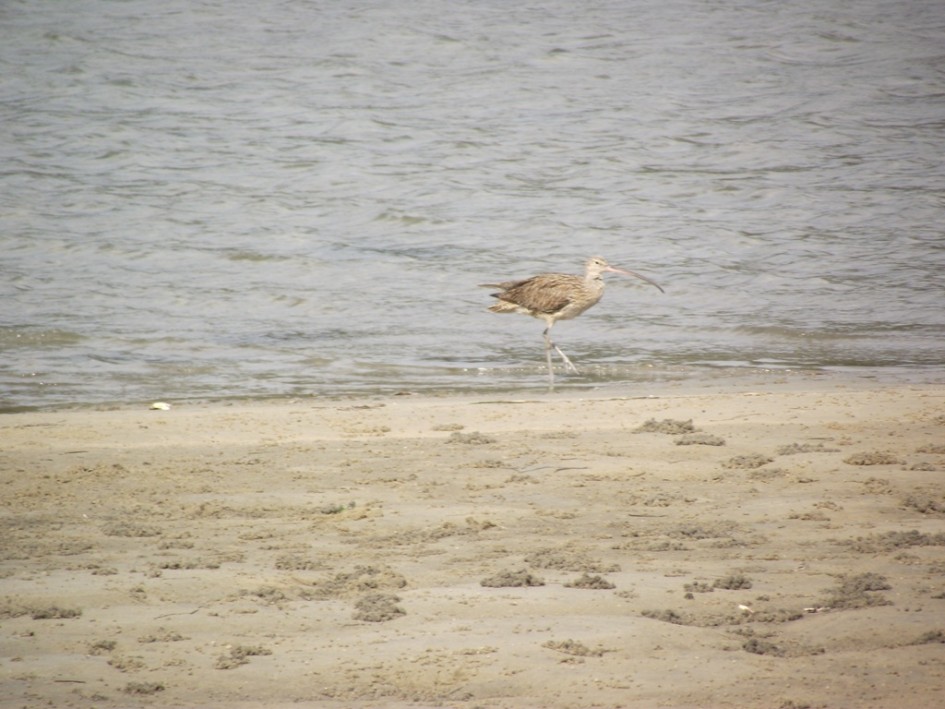
Eastern Curlew at Careel Bay foreshore in October 2011 - A J Guesdon photo
.JPG.opt1460x973o0,0s1460x973.jpg?timestamp=1663629195339)
Unfortunately, here too, people report the same people doing the same things and their same pet dogs chasing off the wildlife at the same time - for months in a row - with little or no actions taken - again for months in a row. - and despite these being 'no dogs' areas.
People have witnessed owners setting their dogs on wildlife - in WPA's, in creeks, on playing fields that are not offleash areas.
The belief now is the Northern Beaches Council simply does not have enough rangers tasked with curtailing what has become a growing problem.
Rangers will turn up at a place where this is occurring for an hour after months of reports and then be absent again for months in a row. The 'above the law' followers are back within hours, the same day.
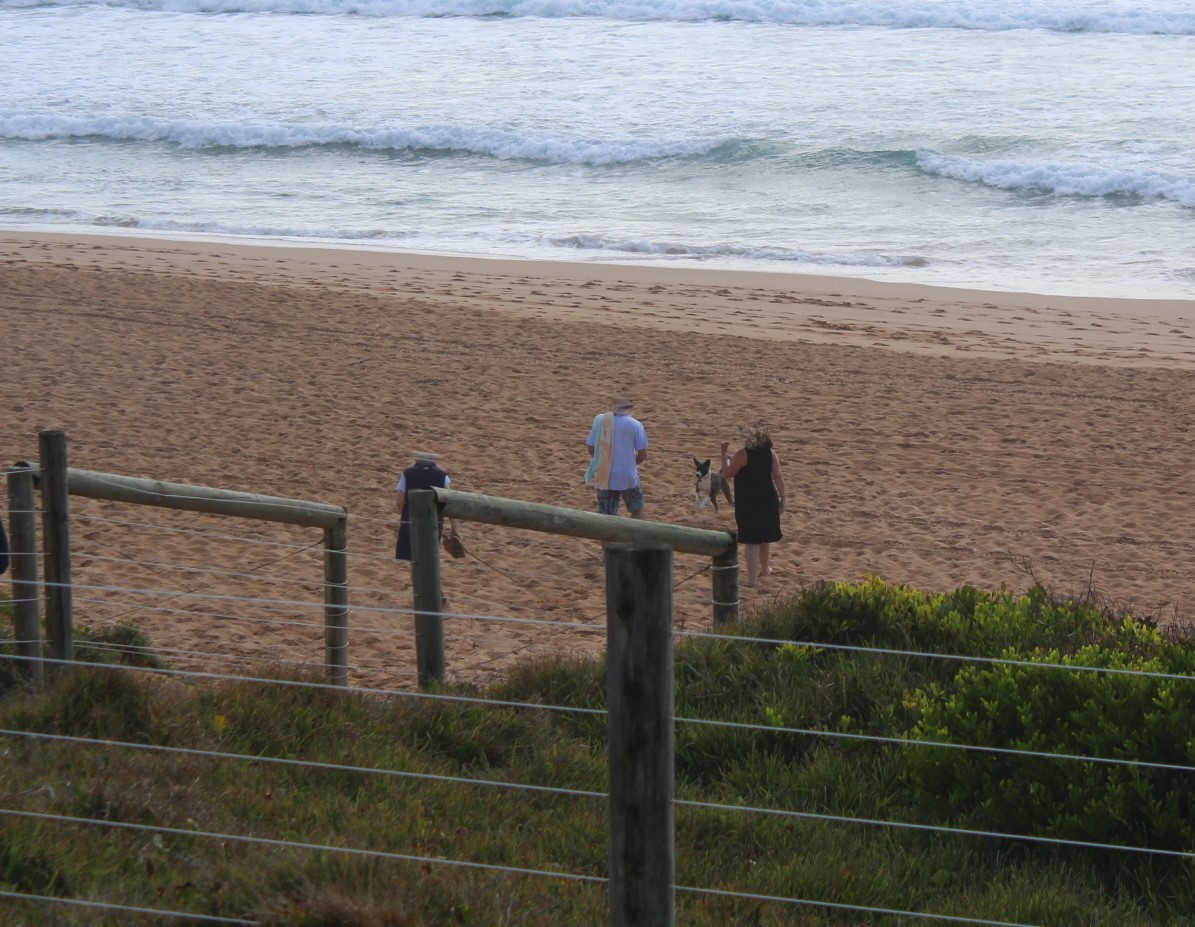
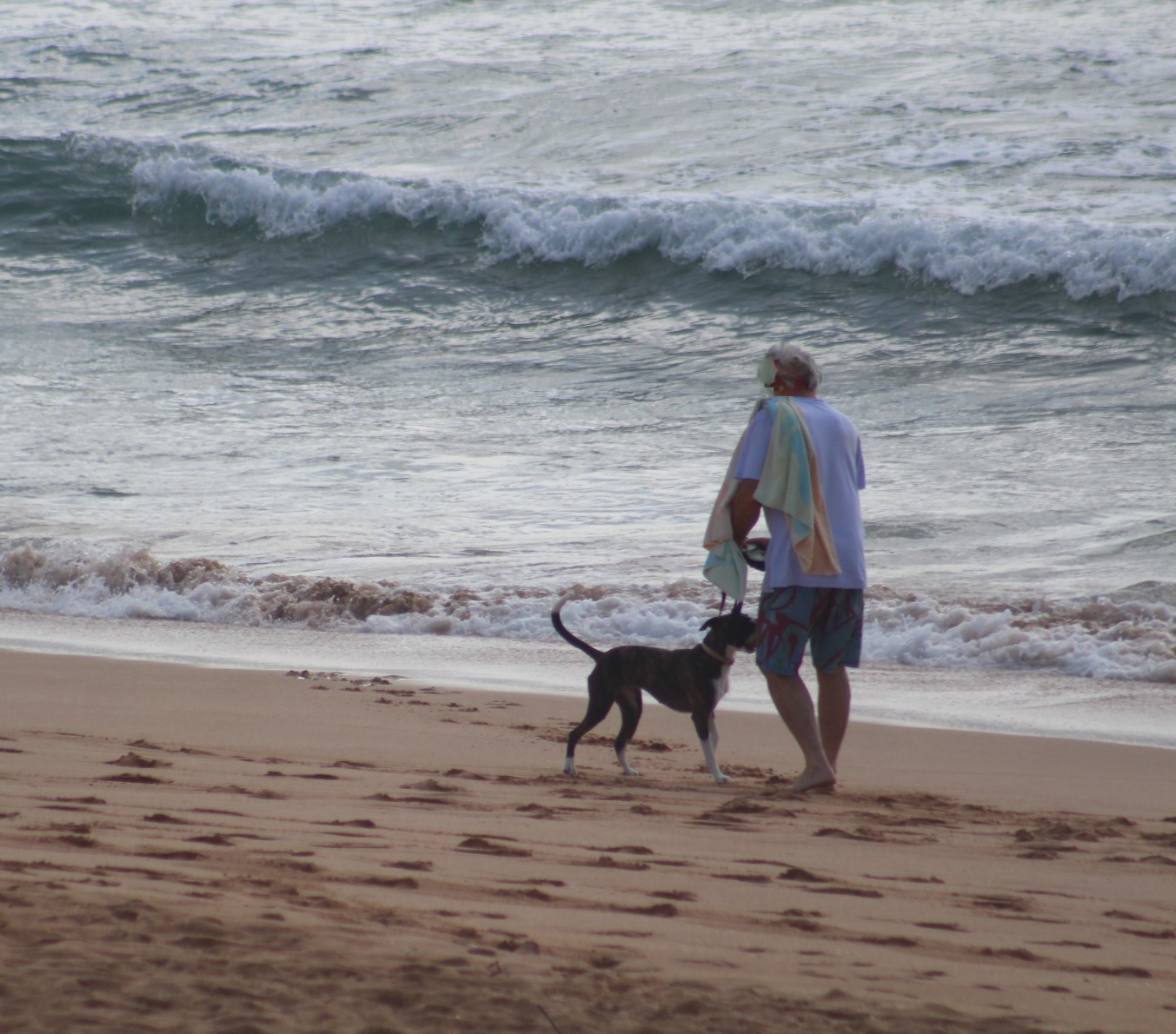
North Palm Beach, New Years Day 2023 at 7.30/8.00 a.m.
As a consequence our area is losing its wildlife.
As another consequence this Council is not honouring its part of Australia being a signatory of the East Asian – Australasian Flyway.
Not only the critically endangered are impacted. The Pacific Black Duck, which has a traditional songline running through our area, going back thousands of years, is being destroyed under this Council's watch by dog attacks on ducklings - on babies - every Spring and every Summer.
These birds are bringing their young along the 'old ways' - the playing fields or drains where creeks once ran - and meet, once again, dogs offleash where they are banned and the same people doing the same thing at the same time - for months on end, unchallenged, or if challenged, threatening physical violence or online and physical stalking and threats of violence.
''People just want these public spaces back.'' the parents of children who have been chased in these areas state.
''We are distressed by the amount of wildlife we are rescuing after a dog has attacked. Many of these we are unable to save.'' wildlife rescuers state. ''There has been so much lately, so many 'rescues'.''
''We did not have this problem under Pittwater Council.'' another states ''They knew where people were doing the wrong thing and made daily patrols to look after residents and wildlife. They made sure they had enough people doing this work. The problem has occurred under the council which was imposed on us and which makes the right noises, those the dog lobbyists like.''
The ringtail Posse
The critically endangered Eastern Curlew being chased by dogs, along with the thousands of residents who have contacted Pittwater Online News about dogs offleash where they are not meant to be has led to what will be one of the 'subject' series this Community News Service will run in 2023.
This has been named the 'Ringtail Posse' as what is called the 'Common Ringtail Possum' is not so common in this LGA anymore, and a core group of volunteers are collating data, penning insights, saving wildlife, taking photographs, investigating local, state and federal laws and much more.
Residents state that we are, alike those still alive who witnessed the extinction of local koalas, the people witnessing the extinctions of all our urban wildlife.
There has been generation after generation of humans living alongside and with wildlife, until this one.
There is a growing silence at night for those species that forage for food then - owls, wallabies, bandicoots. The same is occurring for those that are active during daylight.
The impacts are not just dog attacks due to irresponsible owners. There is what is termed the 'inconvenient possum' in a roof or garden shed, because its home tree has been cut down. These are caught by those hired, some of whom have little knowledge or scruples, and release them into areas out of their home range - a death sentence for that possum as this species is territorial, along with requiring certain food trees in order to eat, to survive.
There is predation by other introduced species - readers regularly send in photos and videos of foxes or cats roaming and killing at night.
There are roadkill black spots, places where wallabies or turtles or possums used to cross the area where a road has been cut through and a speed limit that means death for wildlife. There are no 'speed humps' in place, and no plan at a local, state or federal government level to do so. Residents and wildlife rescuers have reported some drivers 'aiming straight for' a stricken animal.
There is the razing of blocks of land for development prior to any required assessment of the environment taking place to circumvent those requirements so a report can state 'nothing present'. There is nothing present because its habitat has been cleared or the wildlife killed by these actions.
At the 2022 LGNSW a Motion to address the same was passed - but has not, as yet, been ratified at NSW State Government level. In fact, the incumbent government is still passing approvals to raze Listed critically endangered woodlands and species - such as Sydney's Koalas.
An overview of that long overdue structure is available in the October 2022 report:
Coupled with those who will illegally or legally kill trees that 'block their view' this generation is witnessing local extinctions, and a possibly permanent silence.
Our area already has thousands of local wildlife impacted annually and that number has risen from around 4000 each year to over 5000.
Data to 30 June 2021 lists of the 5, 235 animals rescued during that 2020 to 2021 period just 1,573 were released. There have been thousands more rescued since then, the bulk of which are not re-released.
As a result of those thousands of resident voices Pittwater Online News is finalising that series of Reports/Profiles that will run. At present we would like to hear from anyone who knows they have bandicoots still living in or visiting their yard.
Please email us if you do, we would like to hear from and talk to you - pittwateronlinenews@bigpond.com - Thank you very much in advance.
There's some background on our local bandicoots, also now seldom heard, in Bandicoots: Friends Or Foes? - a 2016 report by one of our local wildlife rescuers and carers.
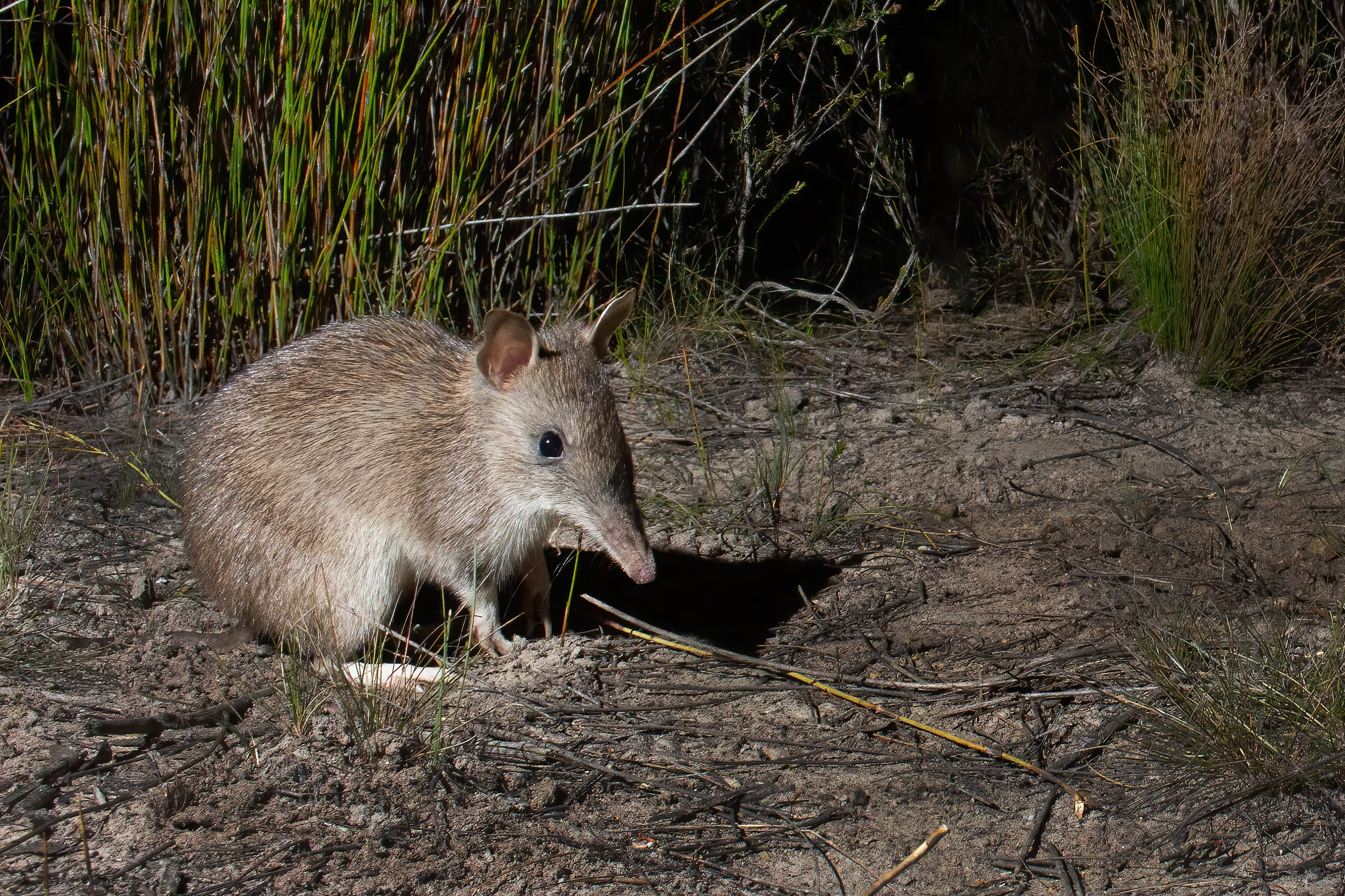
Long-nosed Bandicoot, Northern Beaches, New South Wales. Photo: J J Harrison.
Why do our dogs and cats bring us dead animals?
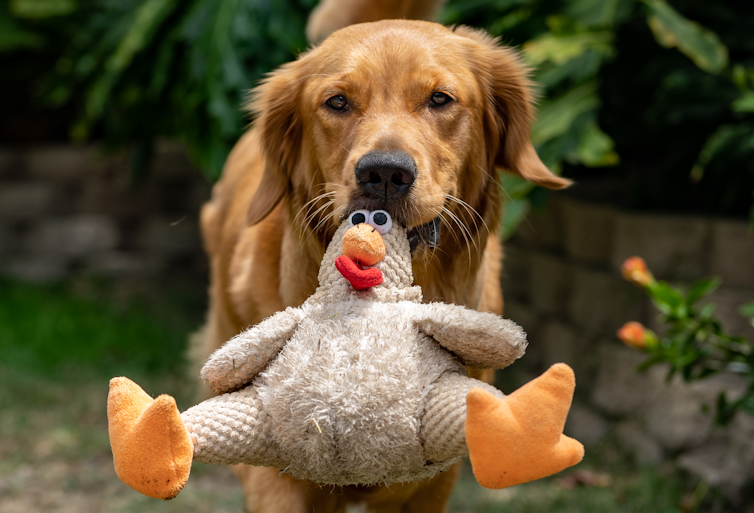
What do a little penguin, a baby rabbit, a black rat and a Krefft’s glider have in common? They’ve all been presented to me (when dead) by my animal companions. Chances are, if you live with a cat or dog, you’ve also been brought something similar.
So, is it a gift, are they showing off, or is something else going on?
Is it meant for you?
The first thing to consider is whether your canine or feline companion is actually bringing you the dead animal, or are you just in the space they have also come to?
As people, we tend to like putting ourselves into the middle of every story (the fancy term to describe this mindset is anthropocentric). But sometimes it’s not about us. Maybe your dog was planning to munch away at that half-rotten critter on their comfortable bed in a known safe place, which coincidentally is near where you are.
Perhaps your cat has entered the room, truly parading the find in their mouth to you. This might include them loudly exclaiming they hit their version of the jackpot with a direct approach: walking towards you, holding eye contact with you and making a distinctive cry (most cat meows are designed to get your attention).
If this is the case, then yes, they probably are intentionally sharing this dead animal with you. But why?
Understanding animal motivations
Did they kill this animal themselves?
Globally, we know people value wildlife in both urban and rural areas. Yet our companion cats and dogs kill huge numbers of wild animals. In Australia, cats in particular have attracted attention and management policies to reduce their impact on local wildlife.
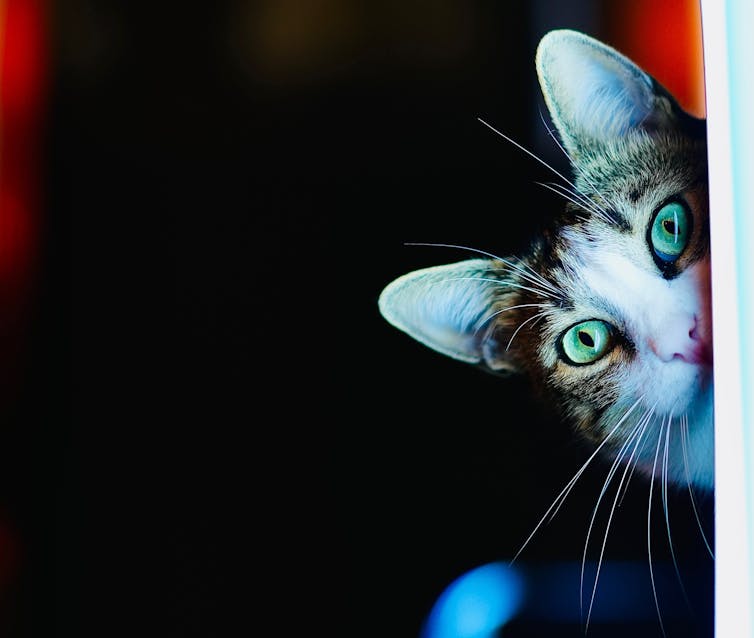
Are they bringing you something that was already dead?
In some situations, our animals may just be opportunistic and have found something that was already dead. Perhaps it was dropped in a paddock by an owl, or washed up on the beach, or hit by a vehicle and found on the side of a road. What are we to make of these offerings?
In 2015, Queensland biologists described a number of individual wild bottlenose dolphins apparently “gift-giving” wild-caught fish (usually already dead) or cephalopods (such as squid and octopus) to the people who fed them fish as part of a regulated feeding program at Tangalooma in Australia.
The researchers thought the gifting was consistent with play, prey-sharing and teaching behaviours observed in dolphins, whales and many other mammals historically considered as big thinkers.
Ultimately, with these dolphins, and with our own animal companions, we can think of this sharing as an expression of the particular relationship between the animal and the human. In some cases, where the behaviour is regular (even if infrequent), we can describe it as part of the animals’ culture, as the dolphin biologists did in their scientific paper.
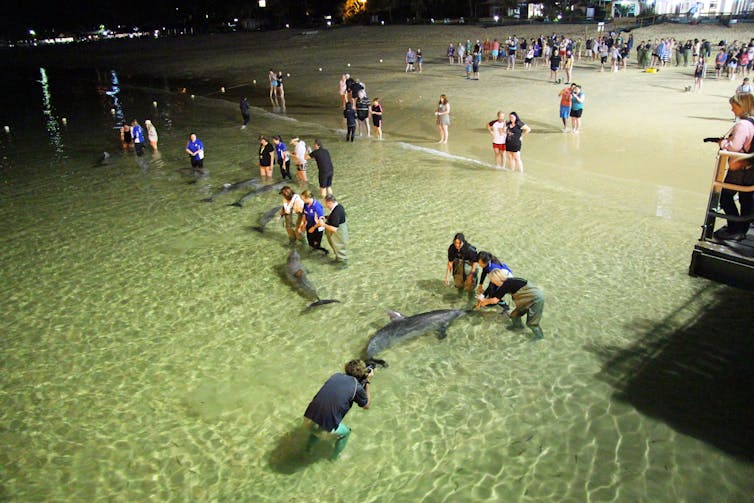
What should you do?
If you ever find yourself in the position where your animal companions bring you a dead animal, there are a couple of things to remember.
Regular parasite control will ensure you don’t all share more than intended. Mites responsible for mange, lice and worms can all spread readily between dead wildlife, animal companions and people. Talk to your veterinarian if you’re unsure about what parasite control your four-legged friend should routinely have.
Stopping cats and dogs from preying on wildlife is a really important part of looking out for everyone’s wellbeing. If you know your animal companion is killing wild animals, you should take action to prevent it.
Effective measures might include safely limiting when and where they go outdoors, a bell on their collar, keeping them on a lead when outside, and redirecting their energy through regular walks, play and fun training activities. Keeping cats inside the home can also limit the spread of diseases to humans and other animals.
So, when your cat or dog presents you with a dead animal, it is normal behaviour and can indicate their attachment to you. It’s also a reminder, though, of how much damage they can do to wildlife and of our responsibility to limit that harm.![]()
Mia Cobb, Research Fellow, Animal Welfare Science Centre, The University of Melbourne
This article is republished from The Conversation under a Creative Commons license. Read the original article.